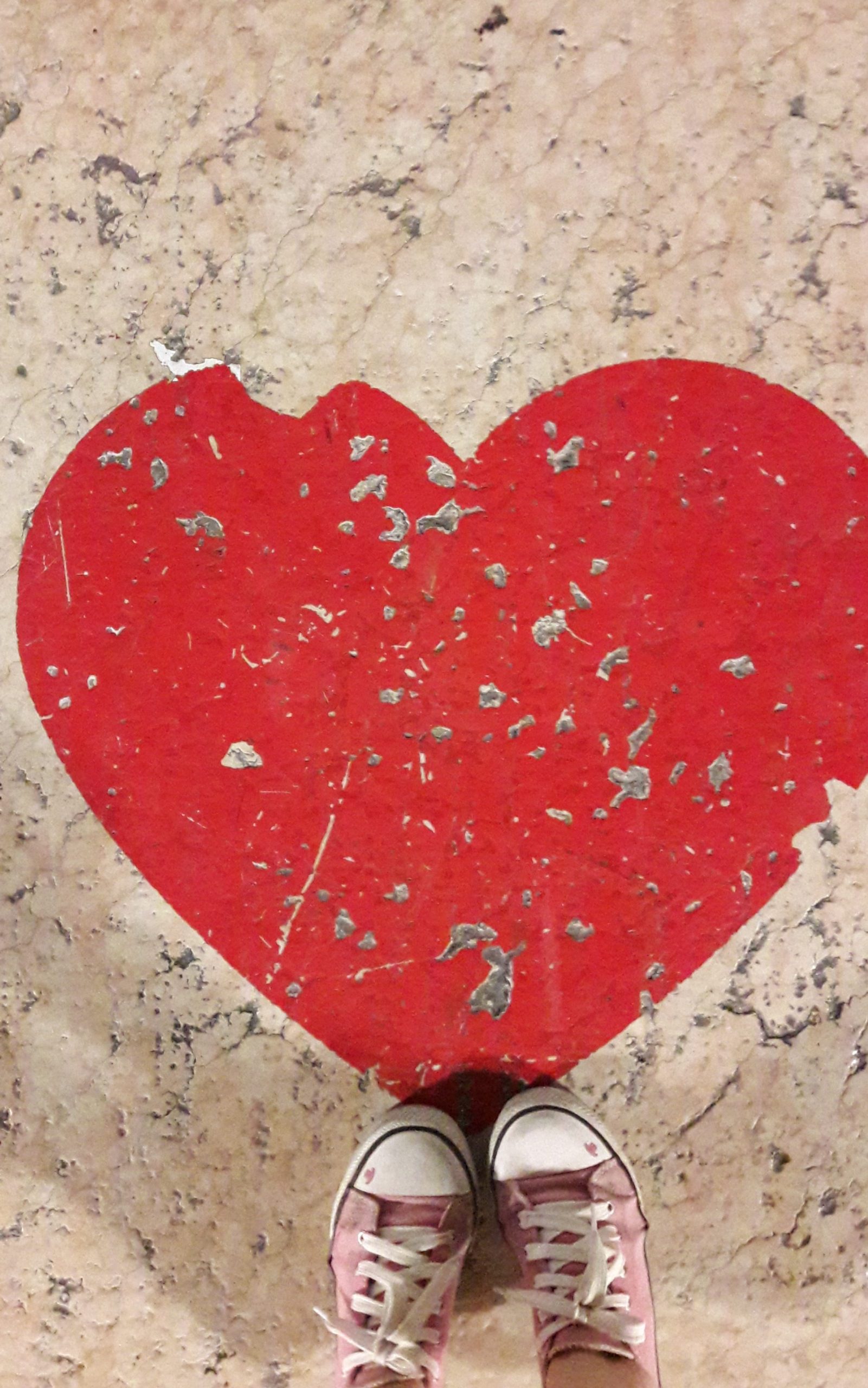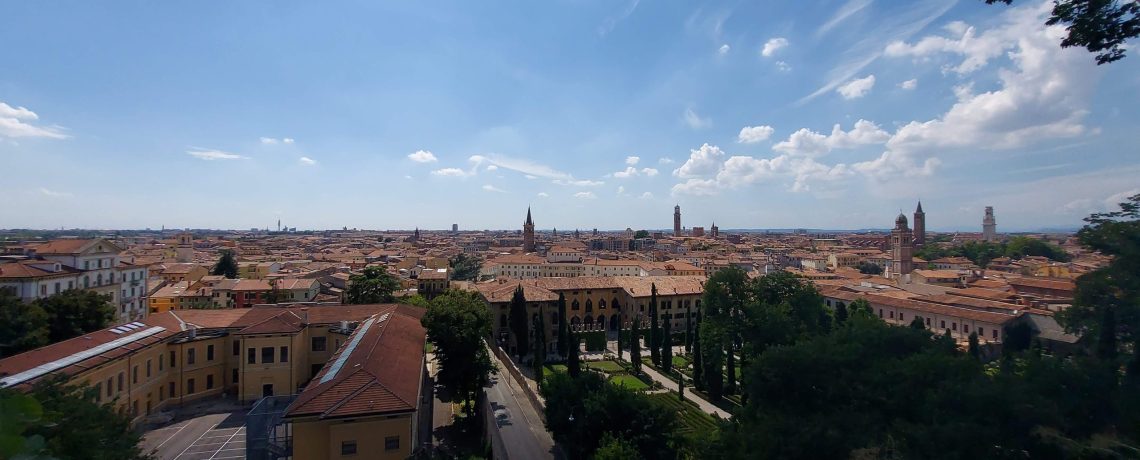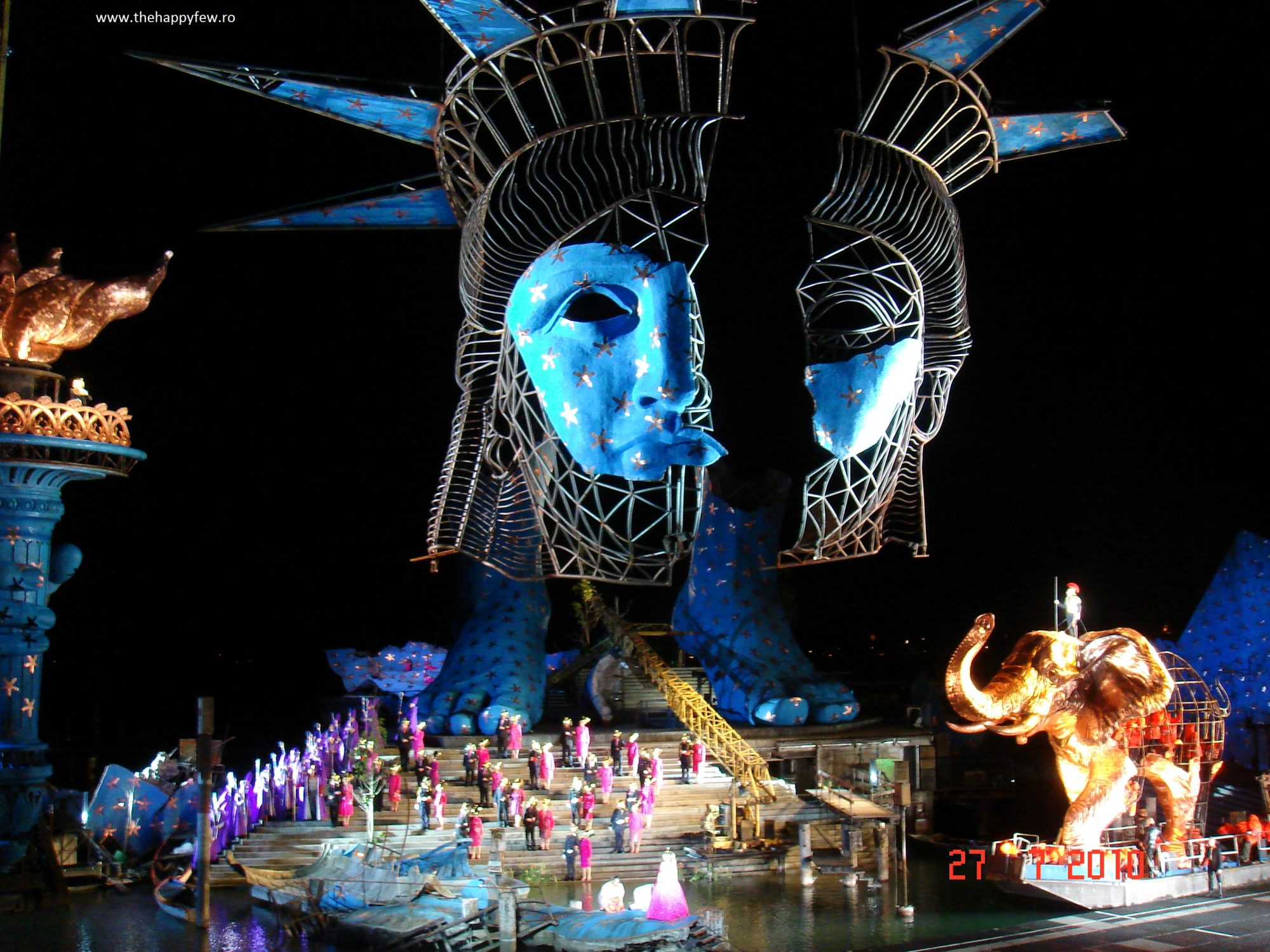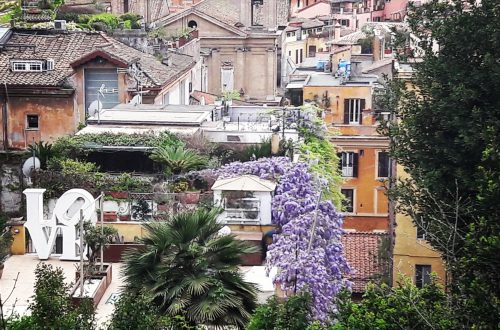The city of Romeo and Juliet can become a love story, and not necessarily a tragic one.

Of all the things to love here, the house of Giulietta and the famed balcony are the least lovable – in fact the tons of heart and Cupid and flashy red souvenirs are maybe the only real tragedy that happened to this place. So forget about that story, and bear in mind that Shakespeare wrote two more Verona-related plays: Two Gentlemen of Verona and the wonderful Taming of the Shrew. I very much wanted to see the house where Katherina was tamed, but no reference to that, I’m afraid. There is still the house of Romeo and the tomb of Juliet, for true fans.
But Verona is no place for the cynical. Romance is fine and subtle on the cobbled streets, passion is fiery at the concerts in the arena and the love of food is everlasting and always has a happy ending.
Yes, it is a city small enough to enjoy on a city break. These are the musts of Verona – I saved the best for last, you’ll see :)))
ONE The terrace of Castel San Pietro, overlooking the city

This green hill that adorns all postcards with its castle and iconic cypress trees is the hearth of Verona, the place of its first settlement in 7th century BC. No entry in the castle, but the terrace has the most beautiful view over the city and it is easily accessible by foot – on large cobblestone stairs up from the Roman Theatre – or by car. Just have a panino or a granita “da portare via” and take your time in the small piazza. Make tens of photos and selfies, of course.
TWO Arena di Verona
When you say Arena di Verona, you say opera. The famous open air festival that takes place each summer in the arena, www.arenadiverona.com, is worth an escape each and every July or August. The arena enjoys perfect acoustics, so the artists perform without microphones, and you can still hear them pretty well from high up the stone steps. The arena is one of the best preserved Roman amphitheaters in the world; located in the funny-named Piazza Bra, it is Verona’s superstar site, the place where all the roads lead, all the people meet and all the superstars come to play. Even if you’re not an opera fan, check out the program and book tickets to a concert, be it rock or pop or classical. The feeling of being there, acclaiming alongside 15000 other people – the same they did for the ludi 2000 years ago, is priceless.



THREE Duomo di Verona and its outside sculptures




Set in a very peaceful untouristy neighbourhood, the Cathedral (Cattedrale Santa Maria Matricolare) is atypical for Verona architecture, where red brick is prevailing. Creamy pink and graceful, it has a Titian painting inside, but the most beautiful part is the sculptures and carvings of the exterior. Two gryphons are guarding the entry, and other fantastic creatures are hiding in plain sight for discovery.
FOUR Piazza delle Erbe
This has always been the true heart of the city. A marketplace since the time of Romans, it still preserves the tradition and hosts a daily market of Veronese merchants, but no herbs or food stalls. The big tower is the Lamberti Tower, part of the former City Hall of Verona. The whole piazza is flanked by beautiful palazzi, flagships of old noble houses that ruled Verona over the past centuries. Palazzo Maffei is hosting a great restaurant with a very nice courtyard, two steps from the crowded piazza. The oldest and most romantic thing here is the fountain, built in 1368, and ornated with the Madonna statue that is in fact more ancient, from 380 AD. A cute encounter for the amorous visitor is the heart at the center of the square – another reminiscence of tragic love, since everybody literally walks all over the heart, sometimes without even noticing it.



FIVE Castelvecchio Bridge / Ponte Scaligero
Built by the despot Cangrande II della Scala, Lord of Verona, to ensure him safe escape from the imminent revolt of the oppressed city, it is a fortified bridge made of red brick, linking Castelvecchio to the other side of the Adige. A masterful design of the 14th century, legend has it that the architect himself came to the inauguration on horseback, to be ready to flee if the bridge crumbled down. Yet it stood strong until the Germans destroyed it completely during WWII. The present bridge is a faithful replica, but still a charming walk along its red fortifications.

SIX Piazza dei Signori
This is now considered the lounge of Verona. When you come from Piazza delle Erbe, you pass under an archway where a strange bone is hanging. It is a whale bone – a rib, to be more matter-of-fact-ish – that the city inherited from the 15th century and no one remembers who put it there in the first place. In the Middle Ages and Renaissance era, the walkway above the arch provided a safe passage for judges and magistrates between the city hall and their homes, so they don’t mingle with the common or “corrupt” people bellow. Part of Verona’s lore, legend has it that the bone will fall only when a pure and completely truthful person will walk under the archway. I walked under it several times in full confidence that it wouldn’t budge.

You will have to climb the Scala della Raggione, too. Palazzo della Raggione, now the Gallery of Modern Art, has a magnificent Gothic staircase named The Stairs of Reason, that everybody climbs in the hope to gain more wisdom. They arrange for weddings here too. Another find in Piazza Signori is the “mouth of anonymous accusations”. Justice was encouraged by judges through the aid of this “mailbox” where people could denounce the wrongdoers and the corrupted. A wise local advised us that informants are still using this today.
SEVEN Giardino Giusti

The beautiful Renaissance garden is one of the city’s most famous and well-preserved gardens, organized into several terraces, each with its own unique features. The uppermost terrace offers a splendid view of Verona’s skyline, including the Arena. The lower terraces have intricate maze-like paths and grottoes, creating a sense of mystery and exploration. Maybe the greatest choice for a picnic in the city.
EIGHT The food and Valpolicella

Casa Perbellini for the Michelin stars, La Griglia for the best steaks near the arena, Ristorante Maffei for the aristo location, La Fontanina for cucina casalinga and the polenta baccala, Re Teodorico for the view, Osteria del Bugiardo for the late night prosciutto and Valpolicella. The list is long, but the fact is that food is great in Verona, much above average for tourist cities and a lot better than Venezia’s – although the local cuisine is still Venetian-inspired. Non-assuming pizzerias that sell pizza a taglio (such as Zio Lele) or gelaterias that reveal the best granitas (the granita di mandorle Al Pompiere is better than in Sicilia) are glorious findings everywhere along the way.





